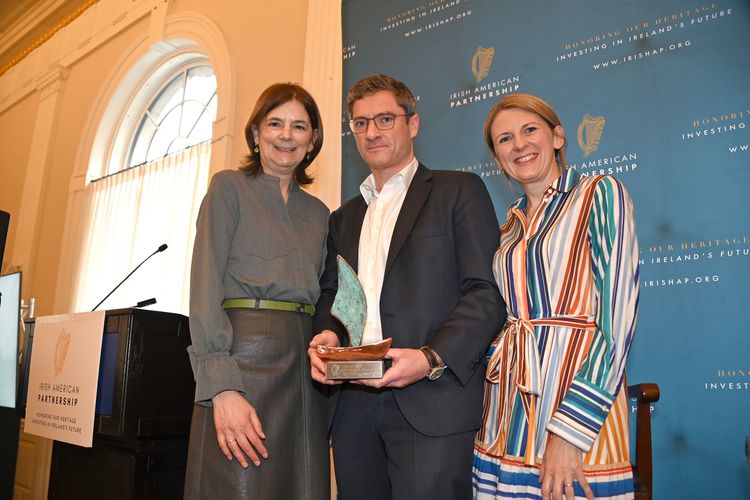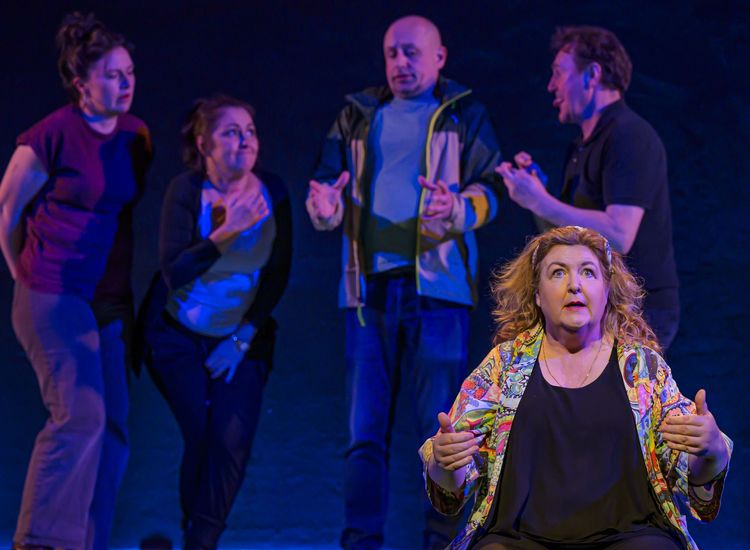By Daniel Neely
At the moment I’m listening to “A Quare Yield,” the recent album from banjoist Alan Reid and fiddle player Rachel Conlan. It’s a lovely collection of unusual tunes from a pair of musicians who very clearly have a strong rapport and who share a vision for how traditional music on the fiddle and banjo should sound. The style they project has a very organic feel and they’ve offered listeners some wonderful music that traditional music lovers will want to check out.
Reid, who is from Killarga, Co. Leitrim, is involved with many projects, but he seems to run a bit under the radar. For example, he’s a member of the band Arum, whose eponymous debut I covered here in 2016, and he contributed an outstanding track to the 2013 album “Leitrim Equation 3” which I singled out in my review at the time as being one of the album’s best. He plays banjo, bouzouki, mandolin and oud here, and it’s great to see him produce an album that puts the focus more fully on his own music. Conlan seems to be an ideal partner, the pair having met at the University of Limerick's Irish World Academy, where they studied music together. Conlan, who plays fiddle and hardanger fiddle on the album, hails from Blessington, Co. Wicklow but has musical roots in north Connaught and west Clare, and is currently based in Kilfenora, Co. Clare. She performs and teaches throughout Ireland.
One of the things that makes this album interesting is the large proportion of unusual tunes, which Reid and Conlan first built into their repertory during their school years. Published sources for some of the older repertory includes P.W. Joyce’s “Old Irish Folk Music and Song,” the Roche Collection, the Simon Fraser collection, and Breandán Breatnach’s 5th book. They’ve also included interesting tunes from a number of great, more contemporary composers, like Joe Liddy, Finbarr and Richie Dwyer, Paddy Fahy, Vincent Broderick and Charlie Lennon. This diverse repertory tunes played with such familiarity and confidence give this album a cool freshness.
The album’s execution is top notch throughout. “Pride of Kildare / …” is a great set of tunes played with passion and a bit of guitar help from Arum-member Marty Barry. “Cucanandy / Tommy Potts / Top it Off” is another lovely track with great playing and well chosen tunes. (“Tommy Potts” in particular!) "Reid and Conlan are lovely players and they really show it on tracks like these, indeed."
One of the more interesting tracks is “Murty Rabbett’s / Polkett Efter Gössa Anders” not only for the tunes that are in it but because it’s got a bit of deceptive arranging that sneaks in and adds a bit of welcome depth. The track features a pair of polkas, the first played on mandolin and the second with an added fiddle. However, banjo and bouzouki blend in and out seamlessly adding texture and drive.
Perhaps the album’s most intriguing track is “Manorhamilton the Eighth of May,” which features Reid on oud and Conlan on hardanger fiddle. This instrumentation offers some fresh expressive potential that I feel is really only hinted at here. The oud is a fretless instrument that would allow the plectrum some degree of fiddle-like ornamentation, while the hardanger’s sympathetic strings, offer a drone that has been utilized by the likes of Caoimhín Ó Raghallaigh, Liz Knowles, Cleek Schrey, and others. I’d be fascinated to hear how Reid and Conlan approach this set in different live situations.
Ultimately, “A Quare Yield” is a strong offering from a pair of musicians who U.S. audiences would be delighted to better know. It’s not an album full of fancy excursion and conspicuous boundary pushing, rather the approach they’ve taken is to find the sweetness in each of the tunes by settling into tidy grooves and working off each other. The results are inviting and enjoyable and eminently listenable. Check it out! To both sample and purchase “A Quare Yield,” visit alanreid.bandcamp.com/releases.
A final quick note: I’m not sure if it’s featured on this album, but of late Reid has been playing a banjo made in Liverpool, England, by a builder named Jim Patton (www.jpbanjos.co.uk). Patton makes an excellent machine that ticks all the boxes in terms of looks, build quality and tone. An inventive design has allowed him to not only significantly decrease the weight of his instruments, but to offer his instruments at an exceptional value. Notable banjoists who play them (other than Reid) include Stevie Dunne and Maggie Carty, and I’m sure the number of top-tier players will increase, as they’re really quite remarkable instruments. If you’re a banjoist and have the opportunity to take one for a spin, take full advantage.










